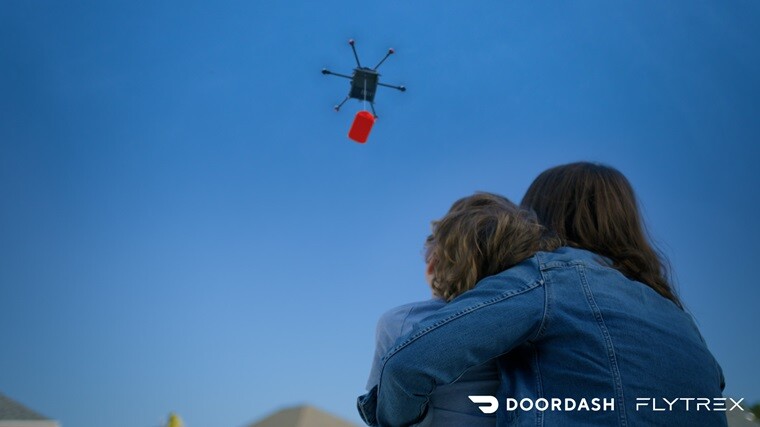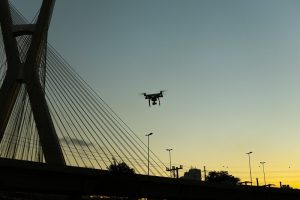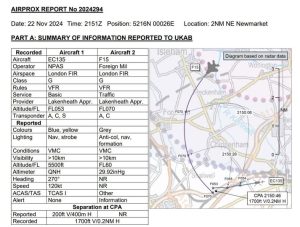DoorDash and Flytrex Expand Restaurant Drone Delivery in Texas: A Deep Dive into the Sky-High Food Revolution
The future of food delivery has officially taken off—literally—in Texas. DoorDash, America’s leading food delivery platform, and Flytrex, a pioneer in drone logistics, have partnered to bring restaurant orders by drone to thousands of North Texas residents. Let’s unpack what this bold leap means for customers, local businesses, and the entire delivery industry.
How the DoorDash and Flytrex Drone Partnership Works
Imagine tapping your DoorDash app, selecting your go-to burger joint, and hearing that gentle hum above your roof as a drone whizzes in with your order. That’s now a reality for the lucky folks in parts of Dallas-Fort Worth—specifically, Little Elm and Frisco—where the new service covers over 30,000 households and 100,000 residents. Drone delivery is available from 8:00 a.m. to 9:30 p.m., seven days a week, through the familiar DoorDash platform.
Ordering is seamless:
- Place your order from participating local and national restaurants (Papa John’s, The Brass Tap, and more).
- At checkout, choose “drone delivery” if available.
- Await your autonomous airborne courier. Food is prepared in-store, loaded into a Flytrex drone, and flown directly to your home or a designated drop-off spot.
Why Texas? Why Now?
Texas is rapidly becoming a national drone delivery hotspot. Regulatory support from cities like Plano and North Richland Hills has created an environment where innovative drone operations can flourish. FAA approvals ensure safety and airspace coordination, while local ordinances help manage drone launch/charging hubs and keep the peace with neighbors.
Flytrex, operating since 2013, has already clocked more than 200,000 drone deliveries, with extensive experience in both Texas and North Carolina. DoorDash’s robotics and automation unit, DoorDash Labs, drives the company’s push into the skies as part of a broader shift toward AI and robotic logistics.
“The Future Is Not If—It’s When.”
DoorDash and Flytrex aren’t just dabbling in gadgets—they’re spearheading a new era of on-demand logistics. As Yariv Bash, Flytrex CEO, explains:
“These expanded operational capabilities are key to making drone delivery a mainstream option rather than a niche service. … We’re rapidly approaching a future where a significant portion of suburban food orders will arrive by air—it’s not a question of if, but when.”
Technology That Makes It Possible
- High-Capacity Drones: Flytrex’s drones can haul up to 6.6 pounds per trip—the highest in the region. Next-generation models are expected to boost that to 8.8 pounds, enabling more substantial, family-size orders.
- Advanced Traffic Management: Flytrex utilizes sophisticated drone traffic control tech, allowing multiple drones and operators to safely cover overlapping delivery areas.
- Autonomy & Safety: The entire journey, from restaurant loading to customer drop-off, is autonomously coordinated, with human oversight for safety and airspace compliance.
- Community & Business Support: DoorDash and Flytrex have engaged with local STEM activities and supported small businesses, helping them access a novel delivery channel and reach new customers.
What Do Customers and Restaurants Gain?
For Customers:
- Lightning-Fast Delivery: Expect your meal within minutes—drone flights sidestep traffic jams, school zones, and construction delays.
- Expanded Operating Hours: Drone deliveries run from breakfast through late dinner, often outpacing human couriers for evening and weekend orders.
- Cool Factor: Let’s face it, watching your pizza descend from the sky is a next-level dining flex. Your neighbors—and your Instagram feed—will notice.
For Restaurants and Merchants:
- Increased Reach: Local businesses can serve a wider, more suburban customer base without adding extra drivers or vehicles.
- Faster Turnover: Drones shorten delivery windows, maximizing kitchen throughput and order volume—especially for high-demand events.
- Brand Buzz: Early adopters of drone delivery stand out, attracting media attention and tech-forward customers.
Real-World Results and Customer Reactions
During its pilot phase with DoorDash, Flytrex completed over 1,000 drone deliveries in Texas, receiving overwhelmingly positive feedback from residents. Many users cite the novelty and speed as major draws, while parents appreciate the STEM learning opportunities for their kids.
A local Frisco resident shared:
“The kids love watching the drone land in the backyard—sometimes, they race each other to see who’ll grab the food first. For us, it means dinner comes fast, hot, and with zero hassle.”
Businesses also report increased orders and more efficient workflows:
- Papa John’s in Little Elm reported a bump in lunch orders, especially from nearby office parks where drone drop-offs are popular.
- The Brass Tap used drone delivery to serve weekend crowds at outdoor events, with food arriving fresher than ever.
Behind the Scenes: The Human Touch
While drones steal the spotlight, this revolution is powered by a dedicated team:
- DoorDash Labs: A specialized robotics and automation unit, blending AI, software, and logistics expertise to explore the boundaries of delivery tech.
- Flytrex Engineers: Operators, software developers, and airspace managers, many with aviation or aerospace backgrounds, oversee everything from drone maintenance to flight path optimization.
- Local Partners: Restaurant owners, city planners, and community groups collaborate to ensure rollout is smooth, legal, and beneficial for all.
DoorDash stresses that drone delivery is not about replacing “Dashers” (delivery drivers); instead, it’s about growing the market, reaching new areas, and offering customers more choice.
Drone Delivery FAQs: What Texans Are Asking
- Is it legal? Absolutely. All operations are FAA-approved, with strict compliance on airworthiness, pilot certification, and flight routes.
- Will my food stay fresh? Yes. Orders are loaded just before takeoff, with insulated containers ensuring your burger or burrito lands hot.
- Where do drones land? Most orders are delivered to specially designated “drone drop” zones: backyards, driveways, or shared public spaces.
- How does drone traffic stay safe? Advanced traffic management software coordinates flight paths and prevents collisions, even with multiple operators in a neighborhood.
- What about noise? City ordinances and FAA rules help keep takeoff/landing areas at safe distances from homes, and modern drones are getting quieter with each generation.
Competitors and the Race to the Sky
DoorDash isn’t alone in the drone delivery arms race:
- Walmart & Zipline: Expanding drone retail delivery across Dallas-Fort Worth and beyond, focusing on groceries and household goods.
- Uber Eats & Grubhub: Experimented with autonomous robots and limited drone trials, but at a much smaller scale.
- Wing (by Alphabet): Operating in other states with select retail partners, including shopping centers and fast-food chains.
Still, DoorDash’s partnership with Flytrex stands out for its scale, payload capability, and deep restaurant network.
Challenges and Next Steps
Drone delivery is still in its early days, with some practical and regulatory hurdles:
- Weather: High winds, rain, and lightning can ground drones temporarily—so don’t expect sushi in a thunderstorm (yet).
- Payload Limits: The 6.6-pound cap serves 1–2 meals, but larger group orders may still require traditional couriers—though capacity upgrades are planned soon.
- Coverage: Not all neighborhoods are eligible yet, but expansion is planned as more hubs and regulatory approvals roll out in Texas.
- Public Acceptance: Ongoing community engagement, transparent privacy policies, and noise mitigation are vital to keep residents on board.
The Big Picture: Drones as Part of Everyday Life
Drone delivery is transforming from science fiction into an everyday convenience. For Texans in Dallas-Fort Worth, it’s as simple as craving tacos, clicking a button, and watching technology bridge the distance between local restaurants and hungry customers.
The benefits go well beyond a hot meal:
- Less Traffic Congestion: Fewer cars on the road for delivery runs.
- Environmental Gains: Electric drones generate less pollution than gas-powered vehicles.
- Inspiration: Drones have already sparked local STEM activities, school projects, and countless “wow” moments for families.
Closing Thoughts: Let’s Get Your Dinner Airborne
At the intersection of food, technology, and Texas spirit, DoorDash and Flytrex’s drone delivery brings the future to your front yard. Whether you’re a busy parent, a foodie, or just someone who loves to marvel at modern marvels, it’s time to look up—your next meal could be flying your way.
So, Texan or not, keep an eye on the sky. The only question left: what will you order first?













